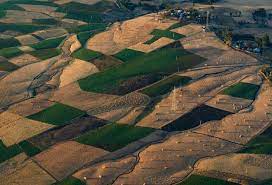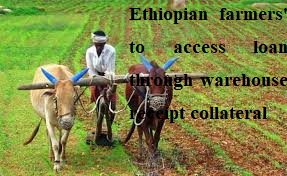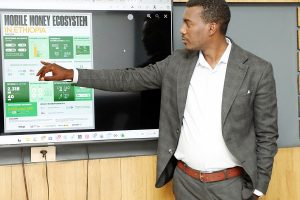
Enset ventricosum is the edible species of the separate genus of the banana family, thus named ‘false banana’, but the Enset fruit is not edible. Variation within the species to altitude, soil and climate has allowed widespread cultivation in the mid- to highlands of western Arsi-Bale, the Southern Peoples Nations Nationalities Regional State (SPNNRS), and western Oromia including West Shewa, Jima, Ilubabor and Welega.
Three Enset derived foods are popular but the most common is Kocho. Although contribution to nutrition is considerable, a formula for its inclusion in the food balances needs to be determined. Anyone who travels in the Enset growing area would conclude that Enset is a major part of the food production/consumption system of the area but quantification of its complex production mechanism has eluded statistical measurement.
Kenyan scholars are advocating for the promotion of food security measures in East Africa, with a particular emphasis on the cultivation and utilization of the Enset crop. This approach involves the use of drought-resistant cultivars, changes in sowing time, cultivation of new crops, efficient use of fertilizers, and improved agronomic water use efficiency. These strategies are crucial for adapting crop plants to reduce the risks associated with climate change.
To address the issue of food security, Kenyan scholars emphasize the need to scale up the production of Enset in East Africa. Sylvester Anami, a senior researcher at the Institute of Agricultural Technology, Biotechnology Research Institute, Jamo Kenyatta University, expressed admiration for the technological advancements made by Arba Minch University in Ethiopia, which have enhanced the production and value addition of Enset-based food products. Anami believes that these technologies will contribute to Ethiopia’s self-sufficiency in food production and recommends their adoption in other East African countries.
Denis Mutiso, Program Director of the International Organization for Girl-Child network in Kenya, stressed that Africa is currently facing the challenges of climate change. Given Enset’s ability to withstand harsh climatic conditions, Mutiso suggests expanding its cultivation in East Africa to ensure food security.
He emphasizes the importance of making Enset available across the continent, as its nutritional content is particularly beneficial for women and children. Mutiso also acknowledges the role of climate-resilient food plants in addressing Africa’s food self-sufficiency challenges.
Kenyan agricultural scholars consider Ethiopia’s Enset crop as a viable solution to mitigate the impact of drought in East Africa. Enset, which serves as a staple food for over 20 million Ethiopians, is well-suited to cope with harsh climates. Therefore, the scholars advocate for its widespread cultivation across East African countries.
They propose collaborative efforts in Enset growing and promotion, highlighting the potential benefits it can bring to the region. In line with this, Kenya and Ethiopia are establishing a partnership for agricultural development. Jomo Kenyatta University and Arba Minch University have agreed to conduct joint research on Enset, aimed at introducing and advancing its production in Kenya. Through technology sharing and innovation, the goal is to facilitate the preparation and utilization of Enset-based food products.
Denis Mutiso, further views, Enset as the next super food that should be introduced throughout the continent. Given the challenges posed by climate change, Mutiso emphasizes the importance of harnessing the benefits of Enset to overcome hardships.
With its drought resilience and environmentally friendly nature, Enset has the potential to contribute to food security in Africa. Mutiso recommends promoting production mechanisms for Enset across the continent.
Adisu Fikadu, Senior Biotechnology Researcher at Arba Minch University highlights the potential of the Enset crop to alleviate hunger in drought-affected areas. Its ability to grow in arid regions makes it a strategic crop for food security programs. Fikadu recommends that the government actively support Enset cultivation and facilitate its export to other countries.
In Ethiopia, two major approaches for achieving food security are enhancing agricultural productivity and asset building/Productive Safety net Program (PSNP). These approaches aim to address the root causes of food insecurity and the associated social and economic challenges in the country.
Many scholars agree that addressing global food security and environmental protection is a pressing concern, particularly in light of climate change uncertainties. Climate change is predicted to have adverse effects on plant physiology, soil fertility, microbial diversity, and ultimately food production. Ensuring global food security and safety requires intensive research efforts across the entire food chain, starting with crop production and nutritional quality. Ongoing efforts focus on improving crop yields, enhancing stress tolerance traits, understanding root/soil interactions, and improving soil properties.
To boost productivity, production, and foreign currency earnings for Ethiopia and other agrarian nations in Africa, several strategies can be implemented, according to documents.
One is investment in agricultural infrastructure. Improving agricultural infrastructure is crucial for enhancing productivity. This includes investments in irrigation systems, rural roads, storage facilities, and processing units. These infrastructure improvements enable farmers to access markets more efficiently, reduce post-harvest losses, and enhance overall productivity.
Since finance is the core engine to carry out any production, adequate access to finance is essential for farmers to invest in modern inputs, equipment, and technologies. Governments and financial institutions, thus, should develop targeted financial services, such as agricultural loans and microfinance, tailored to the needs of small-scale farmers. Additionally, promoting financial literacy programs can help farmers effectively manage their finances and make informed investment decisions, it is underlined.
Utilization of technology is the order of the day in this ever changing global situation. In this regard, encouraging the adoption of modern agricultural technologies can significantly improve productivity. This includes promoting the use of high-yielding crop varieties, precision farming techniques, efficient irrigation methods, mechanization, and digital farming technologies. Providing training and extension services to farmers on the proper use of these technologies is crucial for their successful adoption.
Increased investment in agricultural research and development is essential for developing improved crop varieties, resilient farming practices, and sustainable agricultural solutions. Collaborative research efforts between universities, research institutions, and farmers can lead to the development of innovative and context-specific solutions for enhancing agricultural productivity and food security.
Climate change adaptation is also essential to a crop to be productive. Given the challenges posed by climate change, it is crucial to prioritize climate change adaptation strategies in agriculture. This includes developing and promoting climate-resilient crop varieties, implementing climate-smart agricultural practices, and improving water management techniques. Investing in climate information services and early warning systems can also help farmers make informed decisions and mitigate the impacts of climate change on agricultural productivity.
Increasing productivity and production without strengthened market linkages would be wastage. Thus, developing robust market linkages and value chains is essential for farmers to access markets, receive fair price for their produce, and enhance their income.
Governments can support the establishment of market infrastructure, facilitate market information systems, and promote farmer cooperatives and producer organizations. Additionally, promoting agro-processing and value addition activities can help create additional income-generating opportunities for farmers.
According to the research documents, capacity building and knowledge transfer is a strategy that enables the farmers to augment their production. Enhancing their capacity through training programs, workshops, and knowledge-sharing platforms is crucial for improving agricultural practices and productivity. Farmer field schools, extension services, and farmer-to-farmer knowledge exchange programs can facilitate the transfer of best practices and innovative techniques among farmers.
All the strategies, to be effective, must be supported by enabling policy. Governments should develop and implement supportive policies and regulations that prioritize agricultural development, incentivize investment in the sector, and protect the interests of small-scale farmers. This includes ensuring access to land, water, and inputs, as well as implementing measures to mitigate market risks and price fluctuations.
By implementing these strategies, countries in East Africa, including Kenya and Ethiopia, can make significant progress in ensuring food security, improving agricultural productivity, and mitigating the impacts of climate change on agriculture. The cultivation and promotion of crops like Enset can play a vital role in achieving these goals, given their resilience to harsh climates and nutritional benefits, according to experts in agronomy.
BY LAKACHEW ATINAFU
The Ethiopian Herald September 15/2023





